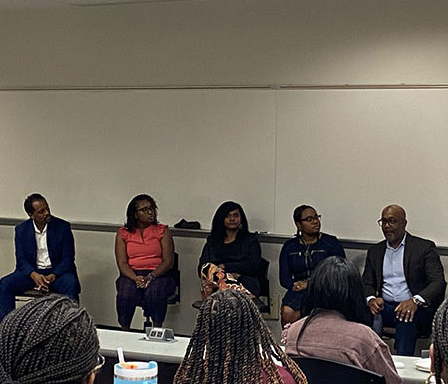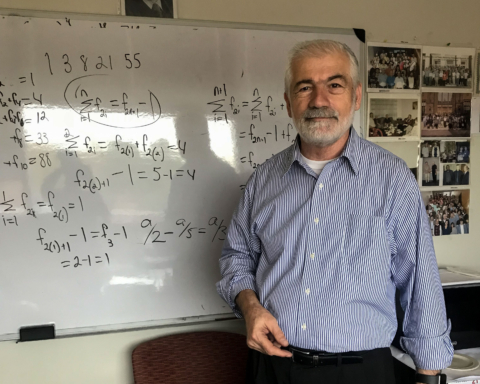What is the common term for the method Louis Pasteur used to create the first rabies vaccine? Too difficult? Okay then, try this one: A screw with a radius of one centimeter has a pitch of one millimeter is tuned by a screwdriver with a radius of 5 centimeters. To the nearest whole number, what is the ideal mechanical advantage? Understand the question? Think you can answer it?
Well, you’ve got five seconds to buzz in with the hope that you and your three teammates will be able to figure out the correct answer.
Those are the kinds of questions tackled by dozens of North Carolina high school students at the 2017 Regional Science Bowl on Saturday, Jan. 28. The students, representing 12 North Carolina high schools, competed in the Mary M. Townes Science Complex.
NCCU has now hosted the Regional Science Bowl for 21 consecutive years, ever since it was launched in 1991 by the U.S. Department of Energy.
Today more than 9,000 high school students and 4,000 middle school students compete nationally in science bowl.
Last year’s winner, “Team One” from the N.C. School of Science and Math, took top honors once again. They will now compete in the Spring 2017 National Science Bowl in Washington, D.C.
“We’re excited,” said one student a student from the winning team, “but we’re also grateful for the judges involved here, for helping us organize this tournament for us and making this possible.”
After NCCU student volunteers served a 7 a.m. breakfast, the competition began at 8:35 a.m.
Teams faced off in a round robin competition and each winner advanced to face off against other round winners.
Questions were drawn from the fields of chemistry, space and life science, physics, energy, and math. Each team had a captain and three members. For bonus questions the team had just 20 seconds to answer.
“We want to make sure enough students are ready for the STEM field,” Veronica Nwosu, biology professor and interim dean of the College of Arts and Sciences said. STEM stands for science, technology, engineering and math. Higher education experts say that the shortage of minorities and women in the STEM field is an alarming problem for the nation as a whole.
NCCU math and physics professor Fredrick Johnson is the regional coordinator of the North Carolina science bowl.
“It was overall a good experience. We won a fair amount of matches and we hoped to make it to the knockout stages,” said a William G. Enloe High School student. “Hopefully next year we can rebound better.”
Oh, and by the way, the answer to the first question from the beginning is attenuation. However, it’s up to you to figure out the second question!


















